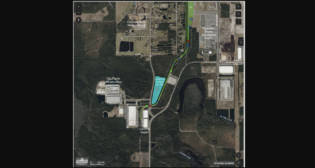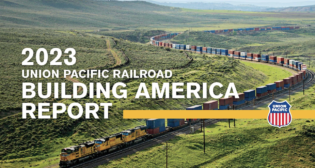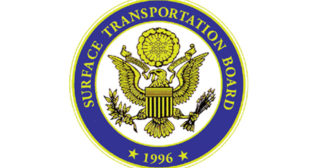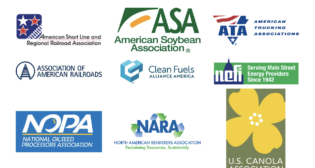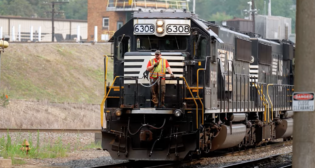
Why We’re Skeptical of a 2H Rebound
Written by Jason Seidl, Matt Elkott, Elliot Alper and Uday Khanapurkar, TD CowenRail volumes have not seen a rebound in 2Q. Intermodal contract rates are down notably and are likely to pressure the group, though sequential volume improvements on the West Coast ports and a bottom in OTR (over the road) spot rates may limit further rate contraction. Mixed expectations on peak season keep us skeptical of a 2H rebound. Rail regulation continues to loom, posing regulatory risk for the U.S. rails.
Where We Stand
2Q carloadings continue to face a soft volume environment and are negative y/y despite soft 1H comps. Rail service metrics are improving (CSX nicely outperforming the group and UNP train velocity is still tracking below pre-COVID levels), which can partially be attributed to the softer demand environment. The weakness continues to be led by intermodal volumes, which are down 11.9% QTD and 10.9% YTD. Over the past several weeks, we have seen an uptick in U.S. intermodal volumes though still well below seasonal levels. This is primarily driven by depressed OTR rates and lower diesel fuel prices, which are making intermodal moves less appealing.
This all has caused pressure on pricing. Indeed, on our recent State of the Ports call, an IMC panelist said it is seeing contract rates down 10-15% this year. This statement aligned with commentary from our Railroad Happy Hour earlier in June, where industry experts said that domestic intermodal rates are down 10-15% for existing customers, and as much as 25-30% to win new customers. The rails have finally been responsive to pricing (led by CSX, and NSC has now followed), which has marginally helped them, but they were slow to adjust when comparing to the more fluid trucking market. Large players like JBHT have been aggressive on certain lanes that have made it difficult to compete.
We remain somewhat skeptical of a big 2H volume turnaround for the U.S. rails, with domestic intermodal likely remaining under significant pressure until OTR rates lift the transport tide. Diesel should be a tailwind to OR for the rails in the near term, though UNP updated its full year guidance earlier in June stating that it is are no longer expecting to achieve OR improvement in 2023. Rail regulation is in focus and keeps us cautious on regulatory risk.
Diesel Prices Continue Downward Trudge
The fuel decline has persisted through 2Q with on-highway diesel prices now –34% y/y, –17% YTD and –7% QTD. We expect falling fuel prices to be a net benefit to 2Q earnings though of smaller magnitude than in 1Q as downward pressure likely began to build on fuel surcharges following the typical 4–6-week lag in response time. Fuel surcharge revenue growth has declined sharply from the highly elevated rates of 2022. These should continue to decline over the course of the year as the y/y growth level remains high at ~40% and 55% for UNP and NSC respectively. That said, lower diesel prices do tend to impact intermodal demand vs trucks as rail movements are 3-4x more fuel efficient.
Permanent Labor Inflation
The Class I’s made further progress in offering seven effective days of paid sick leave to their unionized workforce over the course of the quarter. NSC has struck deals with all the rail unions while CSX and UNP are well on their way to cover the entire labor force as well (61% and 68% of craft workforce covered, respectively). The rails have also made progress on other work condition rules. The U.S. Class I’s will likely face near-term margin pressure from labor-cost inflation resulting from these developments. UNP expects these added costs to prevent FY OR improvement. We believe the U.S. Class I’s will tolerate these inflationary pressures and are unlikely to compensate by rightsizing headcount (no furloughs) as they aim to preserve momentum on service quality improvements.
Rail Regulation in Focus
Appetite to further regulate the U.S. Class I rails intensified in 2Q at the heels of the CPKC merger approval and the East Palestine derailment. Reciprocal switching and safety rules are at the top of the regulatory agenda. Our research suggests that reciprocal switching has greater potential earnings impact for the U.S. Class I rails as it can pressure pricing by promoting greater competition among carriers. We estimate annualized EPS declines ranging from 2% to 9% and expect the STB to announce a proposed rule in 2H23 which will be followed by comment period of uncertain length. Impacts will likely materialize in 2025 and beyond in our view. The Railway Safety Act, on the other hand, is likely to have minimal capex implications for the rails and has a long runway before becoming a law.
Changes to Our Estimates
We adjust our Q2 estimates downwards to account for QTD volume trends using our Railshare data, diesel pricing and yields. Rail volumes continue to track below pre-COVID levels despite easy comps in 1H, and we lower our 2H rebound in intermodal, given current trends. We maintain our 16.5x multiple, which is slightly below the group’s historical average, following our Ahead of the Curve, where we lowered our U.S. rail multiples by half a turn. We will continue to monitor regulatory concerns as well as new services in Mexico that have increased competition following the closing of CPKC. The West Coast port tentative labor agreement should benefit UNP, given material freight diversions to other ports.
